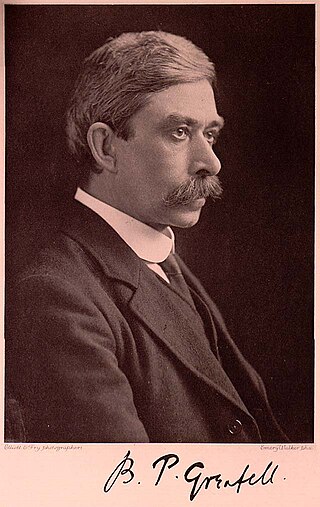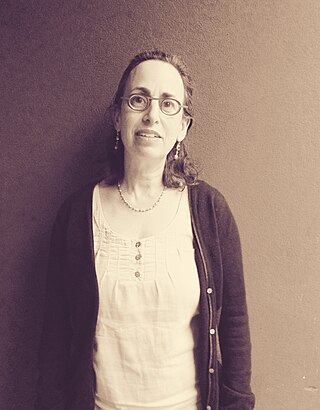Research
Wendrich has participated in projects at Çatal Höyük, Amarna, Elephantine, and Qasr Ibrim and directed excavations of her own. From 1994 to 2002, she was co-director of excavations at the Roman port city of Berenike on the Egyptian Red Sea coast with Prof. Sidebotham from the University of Delaware. From 2003 until 2014, Wendrich has been working as co-director of the excavations in the Fayum region of Egypt, on the North shore of Lake Qarun in cooperation with René Cappers of the Rijksuniversiteit Groningen and Simon Holdaway of the University of Auckland on the URU. The Fayum Project URU includes excavation work on both a variety of Neolithic and Graeco-Roman period sites, including Karanis (Kom Aushim). Work on the Neolithic materials resulted in the discovery of the evidence for farming in Egypt at the site Kom K. Wendrich has been involved in archaeological education as the chairperson of the board of directors at the Institute for Field Research. Since 2015, She has been Director of the UCLA Shire Archaeological Project in Shire, Ethiopia.
Wendrich's field research has been centered on community-involvement initiatives, the most notable of which includes planning and designing several exhibitions highlighting the material culture of the indigenous Ababda nomadic communities since 1997 at the site museum in Berenike (1997), the Netherlands-Flemish Institute in Cairo (1999), the World Museum in Rotterdam, The Netherlands (2001), and the design and planning of the exhibit of Ababda Cultural Heritage Center in Wadi Gemal National Park in collaboration with Gabriel Mikhail in 2006. In 2012, she also planned the restoration and design of the "Beyt Sobek" Visitor's center at Karanis in the Fayum, which was the old 1920s excavation house.
Service
In addition to her field research, Wendrich has been involved in a number of digital humanities initiatives at UCLA. Since 2005, She is Editor-in-Chief of the UCLA Encyclopedia of Egyptology, a collaborative project aimed at providing accurate, open-source articles on a wide range of Egyptological topics. In collaboration with members of the Deutsches Archäologisches Institut, Kairo, Wendrich developed the Aegeron (Ancient Egyptian Architecture Online) project.
Wendrich is also serving on many professional committees and editorial boards. Since 2016, she is an Academic Advisory Board Member of Museo Egizio, Turin, Italy. She is also a Co-chair Board of Governors of the Institute for Field Research, and Vice-President (former President) of the International Association of Egyptologists. Her editorial positions include editorial board membership of the Journal of Egyptian Archaeology, Journal of Computer Applications in Archaeology, African Archaeology Review, and the Polish Archaeological Series of the Polish Centre of Mediterranean Archaeology, University of Warsaw.

The Ababda are an Arab or Beja tribe in eastern Egypt and Sudan. Historically, most were Bedouins living in the area between the Nile and the Red Sea, with some settling along the trade route linking Korosko with Abu Hamad. Numerous traveler accounts from the nineteenth century report that some Ababda at that time still spoke Beja or a language of their own, hence many secondary sources consider the Ababda to be a Beja subtribe. Most Ababda now speak Arabic and identify as an Arab tribe from the Hijaz. The Ababda have a total population of over 250,000 people.

Kazimierz Józef Marian Michałowski was a Polish archaeologist and Egyptologist, art historian, member of the Polish Academy of Sciences, professor ordinarius of the University of Warsaw as well as the founder of the Polish school of Mediterranean archaeology and a precursor of Nubiology.

Berenice Troglodytica, also called Berenike or Baranis, is an ancient seaport of Egypt on the western shore of the Red Sea. It is situated about 825 km south of Suez, 260 km east of Aswan in Upper Egypt and 140 km south of Marsa Alam. It was founded in 275 BCE by Ptolemy II Philadelphus (285–246 BCE), who named it after his mother, Berenice I of Egypt.

Gertrude Caton Thompson, was an English archaeologist at a time when participation by women in the discipline was uncommon. Much of her archaeological work was conducted in Egypt. However, she also worked on expeditions in Zimbabwe, Malta, and South Arabia. Her notable contributions to the field of archaeology include creating a technique for excavating archaeological sites and information on Paleolithic to Predynastic civilizations in Zimbabwe and Egypt. Caton Thompson held many official positions in organizations such as the Prehistoric Society and the Royal Anthropological Institute.

Faiyum is a city in Middle Egypt. Located 100 kilometres southwest of Cairo, in the Faiyum Oasis, it is the capital of the modern Faiyum Governorate. Originally called Shedet in Egyptian, the Greeks called it in Koinē Greek: Κροκοδειλόπολις, romanized: Krokodilópolis, and later Medieval Greek: Ἀρσινόη, romanized: Arsinoë. It is one of Egypt's oldest cities due to its strategic location.

Bernard Pyne GrenfellFBA was an English scientist and egyptologist.
Joyce Marcus is a Latin American archaeologist and professor in the Department of Anthropology, College of Literature, Science, and the Arts at the University of Michigan, Ann Arbor. She also holds the position of Curator of Latin American Archaeology, University of Michigan Museum of Anthropological Archaeology. Marcus has published extensively in the field of Latin American archaeological research. Her focus has been primarily on the Zapotec, Maya, and coastal Andean civilizations of Central and South America. Much of her fieldwork has been concentrated in the Valley of Oaxaca, Mexico. She is known for her "Dynamic model", four-tiered hierarchy, and her use of interdisciplinary study.

Karanis, located in what is now Kom Oshim, was an agricultural town in the Ptolemaic Kingdom, and Roman Egypt located in the northeast corner of the Faiyum. It was roughly 60 hectares in size and its peak population is estimated to be 4000 people, although it could have been as much as three times greater. Karanis was one of a number to towns in the Arsinoite nome established in the third century BC by Ptolemy II Philadephus, and lasted until the 6th century AD. Though Karanis declined in the late Ptolmaic period, in the first century BC, the town expanded north when Augustus, having conquered Egypt and also recognizing the Faiyum's agricultural potential, sent workers to clean up the canals and restore the dikes that had fallen into decline, restoring productivity to the area.
Jeanne E. Arnold, Ph.D., was an archaeologist who taught in the anthropology department at the University of California, Los Angeles. Her fields of research covered many topics, but she specialized in the prehistoric and early contact era of the Pacific Coast of North America, in California and British Columbia. Her work in these areas was directed to resolving the economies and political evolutionary trajectories of complex hunter-gatherer groups. She died on November 27, 2022 following a long illness.
Giorgio Buccellati is an Italian archaeologist, best known for having discovered the ancient city of Urkesh, capital of the Hurrians, in Syria.
Rosalind Louisa Beaufort Moss, FSA was a British Egyptologist and bibliographer, noted for her work on The Topographical Bibliography of Ancient Egyptian Hieroglyphic Texts, Reliefs and Paintings.

The Research Centre in Cairo, Polish Centre of Mediterranean Archaeology University of Warsaw, is the only Polish scientific research institution in Africa and the Middle East, where it has operated since 1959 in Cairo. The mission of the Research Centre is to develop and expand Polish research in the region, particularly in the Nile Valley. It is operated by the Polish Centre of Mediterranean Archaeology, an independent research institute of the University of Warsaw. The PCMA Cairo Research Centre is located in two buildings situated in close proximity to one another in the Cairo Heliopolis district — in antiquity the centre of a religious cult and the location of the Egypt's reputedly largest temple.
Penelope 'Pim' Allison is an academic archaeologist specialising the Roman Empire and since 2015 has been professor of archaeology at the University of Leicester. She is also a Fellow of the Society of Antiquaries and an Honorary Fellow of the Australian Academy of the Humanities.
Alicia Daneri Rodrigo is an Argentine Egyptologist who earned a doctorate at the Universidad de Buenos Aires.
Myriam Seco Álvarez is a Spanish archaeologist and Egyptologist. A distinguished authority in those fields, the author of several reference books, and responsible for excavations in the Middle East and Egypt, she has launched and directed important archaeological projects, including the excavation and restoration of the mortuary temple of Pharaoh Thutmose III. The so-called "Spanish Indiana Jones", she has had a prolific professional career and a broad international presence.

Bonnie Effros is Professor and Head of History at the University of British Columbia. She previously held the post of Chaddock Chair of Economic and Social History at the University of Liverpool. She is and a Fellow of the Royal Historical Society. She is an expert on the history of France in the nineteenth century, and late antique and early medieval history and archaeology, history of archaeology, and gender history and archaeology.
Marilyn Kelly-Buccellati is an American archaeologist, who focused her research on the Caucasus and ancient Syria in the third and second millennium B.C..
Fayza Mohamed Hussein Haikal is a professor emerita of Egyptology at the American University in Cairo and the first Egyptian woman to earn a PhD in Egyptology.
Kom K and Kom W are Neolithic archaeological sites in the northern Fayum region of Egypt dating to the mid-5th millennium BCE with evidence of human occupation for approximately three centuries from the stratified hearth mounds. Radiocarbon dates from charcoal and botanicals found beyond the mounds yield older yet scattered dates well into the 6th millennium BCE. Both sites are situated near the shores of Lake Qarun, which was extensively researched for its water level fluctuation, due to shifts in the Nile floods and its effect on human occupation periods. Kom K and Kom W were both situated within 1 km of the lake during most of its human occupation periods when lake levels were much higher. The first academic fieldwork was carried out by archaeologist Gertrude Caton-Thompson and geologist Elinor Wight Gardner in the three seasons of 1924–5, 1925–6, and 1927–8. Kom K and Kom W yielded archaeological findings that differ from the culture units within the Egyptian Neolithic known at the time leading Caton-Thompson and Gardner to claim the sites as part of Fayum A and B cultures. The area has been re-investigated by the URU Fayum Project since 2004 where it has since been threatened by agriculture and development.








